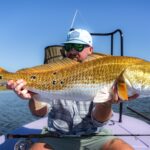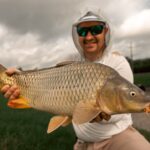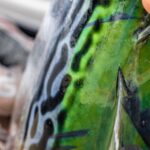
Louisiana Bull Reds Up for Harvest Again: H.B. 604 Must Not Pass
Photo Credit: Carter Abramson | Trevor Johnson Every now and then, we encounter something so
The Atlantic States Marine Fisheries Commission will meet this week (May 1-3, 2023) for its spring meeting. Now most of you likely know that striped bass is the major agenda item, but there are some additional agenda items that are worth keeping tabs on. For the last few weeks, ASGA met with many ASMFC commissioners to lay out our positions and learn how commissioners are thinking. This blog will highlight the important agenda items and provide an update on our efforts—follow along!
Also, a huge thank you to everyone who signed-on to our striped bass letter. In total we received 3311 signatures in total which breaks down into: 2,975 private anglers, 196 fishing guides, and 142 businesses/brands. We appreciate every single signature. If the Striped Bass Management Board doesn’t initiate a management protocol to continue rebuilding, our trust in their ability to manage this fishery will be shattered.
For us at ASGA—and most anglers along the East coast, the Striped Bass Management Board meeting will be the marquee event. This is also evidenced by the over 3,000 signatures ASGA received for our letter, which was included for supplemental meeting materials. This meeting will begin Tuesday morning at 8:30am and is scheduled to end at 12:30pm—we’ll see if the Striped Bass Board can hold to that schedule, as there is a lot to get through.
We have a real opportunity to proactively develop precautionary management for false albacore and Atlantic bonito. On Wednesday, May 3rd, the ASMFC Policy Board will consider paths forward for managing these two species. ASGA’s letter and the literature reviews (False Albacore and Atlantic Bonito)we commissioned were included in the supplemental comments.
The Menhaden Board will meet Monday, May 1st, at 2:45pm. This meeting will mostly consist of presentation and science updates, but there still may be important discussions. For example, we will receive an update on two menhaden stock assessments—the single-species and Ecological Reference Point models. The ERP model determines how many menhaden need to be left in the water to sustain predators such as striped bass, bluefish, and ospreys. The greater these populations grow, the more menhaden are to be conserved for the ecosystem. Also, the Administrative Commissioner from Virginia will give a presentation about the state’s Menhaden fishery, which has become controversial due to the reduction fleet’s operation in the Chesapeake Bay.
The Sciaenid Board deals with the drum family. This includes black drum, spot, croaker, red drum, and weakfish. As ASGA continues to grow and expand, we will include management actions on sciaenids, especially redfish in 2023. These species are important to a growing number of our members and thus important to ASGA.
Black drum will be covered in this meeting in addition to some important decisions on spot and croaker as well.
Those are the primary meetings we’ll be keeping tabs on, but the ASGA Team will report out what happened at this meeting as soon as we can. In the meantime, thank you all again for supporting our efforts to encourage the ASMFC to be precautionary with these incredibly important fisheries and for lending your voice.

Photo Credit: Carter Abramson | Trevor Johnson Every now and then, we encounter something so

This past weekend, ASGA proudly sponsored the Dirty Carp Tournament in Louisiana — and no, you didn’t misread that.

After years of data pouring in from The Albie Project, advocacy, persistence, and support from

This morning, the Connecticut Environment Committee held a hearing on House Bill 6248, a bill
We rely on our members and donations to keep fighting for a sustainable tomorrow in marine conservation.
GIVE THE GIFT OF FISHERIES CONSERVATION THIS HOLIDAY SEASON. SHOP ASGA GOODS THAT FUND FISHERIES RESEARCH & ADVOCACY CAMPAIGNS
JOIN ASGA IN CALLING FOR CRITICAL MANAGEMENT ACTION AFTER YEARS OF SPAWN FAILURES & POOR MANAGEMENT.
By using this website, you agree to our use of cookies. We use cookies to provide you with a great experience and to help our website run effectively. To learn more, please review our privacy policy.